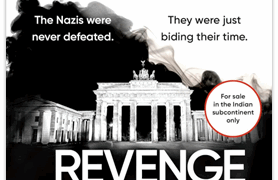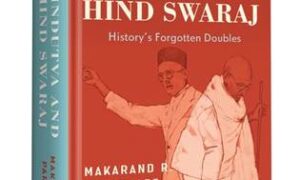
By Dr Shashank Shah
In my previous post on consumer delight at HUL, I had identified the trinity of challenges that any FMCG company typically faces: value (quality) that the consumer seeks from the company, the price at which the company sells, and the profitability which the shareholder is demanding from the company. For elaboration, see the article at: How does India’s largest FMCG Company delight crores of consumers every day?!
Given that my focus is on HUL as India’s largest FMCG company for nearly a century, I have attempted to decipher from their strategies the key learnings for students, researchers and practitioners in the areas of Marketing, Advertising and Brand. Discussions with HUL leaders and following its performance over a couple of decades, I observed that in order to overcome the trinity of challenges, HUL used a trinity of strategies that made it the preferred FMCG brand for crores of Indian consumers.
The first strategy was Redefining the Cost-Quality Paradigm. I discussed this in detail in my earlier posts on HUL’s initial failure in dealing with Nirma, and its subsequent change in strategy with the launch of Wheel detergent to counter Nirma, and the Surf Excel to counter Ariel from P&G. You could read these at:
- Hindustan Unilever Limited: Competing with Goliath
- Learning from Competitive Challenges in the Indian FMCG Sector
In the current post, I am elaborating on the second of the trinity for HUL’s success with consumers: its Consumer-Centric Communication Strategy.
In the early 1970s, HUL was a prominent advertiser on radio, print media and billboards across India. Since those days, almost 10% of its revenue is spent on advertising and media. The proportion has remained the same over four decades. (In 2015, for net sales of ₹ 30,171 crore, HUL’s advertising and promotion expense was ₹ 3,875 crore.) In the 1980s, when television became the most powerful medium of advertisement and promotion, HUL used characters that instantly clicked with masses. Most people remember the ‘Liril Girl’ promoting Liril freshness, ‘Lalitaji’ promoting the value for money Surf detergent, and well-known Bollywood film stars sharing their beauty secret—Lux!
Figure: Leela Chitnis Endorses Lux Soap, the first Indian actress in an Indian Ad
Reason for sustained emphasis on communication over a half a century?
The answer is that in a retail consumer-focused business, even if a company has a great product, if it’s not able to make the consumer aware of it through the right choice of media mix , or it’s not able to reach the consumer because of lack of appropriate distribution channels, the company’s product would fail. During our conversation, Dhaval Buch, now Chief Procurement Officer at Unilever, emphasized HUL’s expertise in activating this mix in the market through the right choice of media, through large national mass media as well as local activities. The Surf and Wheel campaigns clearly revealed how the right message to the right audience made all the difference. (Media mix refers to the various advertising channels through which a company communicates with its audience in order to fulfil a campaign as outlined in the media plan. Generally, a media mix includes radio, TV, print and online advertising endeavours.)
Surf Excel
In India, laundry consumes nearly 20% of household water. HUL’s proprietary technology that reduced water consumption and time taken for rinsing by 40% was of great benefit to most parts of India facing water scarcity. Using the example of the Surf Excel where product quality and right media mix made all the difference, Prasad Pradhan, now Head of Sustainable Business and Communications at HUL said, ‘Usually detergents need a lot of water. But Surf Excel required less water to do as good a job. We communicated this specific benefit to the final consumers effectively. As a result, both advertising and the product were a great success. We received an excellent response from consumers.’
Wheel Detergent
After the launch of Wheel, HUL had to promote two detergents—Surf and Wheel. It clearly emphasized the difference between the two products so that the distinction between the two customer segments was clearly maintained. It did not want cannibalization of either brands. While Surf was aimed at a quality conscious urban housewife, Wheel was aimed at a cost conscious ‘rurban’ housewife. (In marketing strategy, cannibalization refers to a reduction in sales volume, sales revenue, or market share of one product as a result of the introduction of a new product by the same producer.)
In case of Surf, it emphasized its superior quality through the famous television and radio commercial featuring the legendary ‘Lalitaji’, a value-conscious and sensible Indian housewife who wanted to give the very best to her family. Taglines such as ‘Sasti cheez aur achhi cheez mein fark hota hai’ (There’s a difference between a cheap product and a good product) and ‘Surf ki kharidari mein hi samajhdari hai’ (Purchasing Surf is an intelligent decision) attempted to impress upon consumers, especially housewives, that by trying to save a little on the price of the product, they were losing out on quality; and that half a kilo of Surf was as effective as a kilo of a cheaper product (indicating Nirma).
Image: The Evergreen Lalitaji with her Surf
In promoting Wheel, which was a direct competition to Nirma, HUL indirectly highlighted the negatives of using cheaper products that have harmful effects on the hands of the housewife using them. This time, the TV commercial showed a depressed-looking housewife staring at the washing powder and saying the famous tagline ‘Maine mangi safai aur tune di haathon ki jalan!’ (I asked for whiteness but you gave me hand-burns). The TV commercial distinguished Wheel detergent from its competitor (a white powder resembling Nirma) and stressed that Wheel gave whiteness and cleanliness while maintaining the softness of the hands of a housewife.
Rural Communication
Besides, the advertisement for the urban and cost-conscious housewife, HUL went for a rural-focused advertising for promoting Wheel. They created short video ads that were shown via cinema vans throughout India. Whereas the typical TV commercials lasted for maximum 60 seconds, these rural promotions were anywhere between two to seventeen minutes. They were not mere advertisements, they were entertainment for rural masses. The innovative approach clicked.
A 2007 study published in the MIT Sloan Review highlighted similar innovative advertising campaigns that HUL undertook for building brand awareness in personal care products. In their article on ‘Strategic Innovation at the Base of the Pyramid’, co-authors Anderson and Markides noted that ‘HUL made widespread use of street performers—magicians, singers, dancers and actors, adjusting their scripts and acts based on the clientele the company wants to reach. Following a series of street performances in north-east India, HUL saw public awareness of its low-priced shampoo soap ‘Breeze 2–in–1’ rise from 22 to 30%. During a six-month period in 2005, it saw the awareness of detergent bar Rin Shakti, increase from 28 to 26%.
Besides, for the first time in the history of advertising in India, special stickers promoting Wheel were placed on hand pumps, the walls of wells were lined with advertising tiles, and tin plates were put on trees surrounding village ponds. The main objective of this promotional campaign was to advertise not only at the point of purchase, but also at the time of consumption.
Figure: Innovative Rural Promotion for Lux Soap
Reaching Media Dark Rural Uttar Pradesh and Bihar
Yet another innovative Rural Campaign launched by HUL in October 2013 was the ‘Kan Khajura Tesan – KKT’ (The Earworm Channel). Aimed at promoting its brands among the price-sensitive consumers, the campaign was focused on the media dark regions of Uttar Pradesh and Bihar. To benefit from this free entertainment facility, people from these areas could give a missed call on the advertised number and in turn receive a call from KKT that provided 18 minutes of free entertainment, along with brief promotional messages on HUL products. ‘Give a missed call and get free entertainment’ was the tagline. By June 2014, it had attracted over 1.1 crore (1 crore = 10 million) subscribers. In a matter of six months, this first of its kind rural promotional campaign had engaged with its consumers for 18 crore minutes. The ads were heard over 10 crore times. It led to an instant increase in awareness for all three brands promoted through it: Wheel by 20%, Pond’s White Beauty by 56% and Close-Up by 39%. All this at a cost of just ₹3 per contact! Consequently, HUL stopped radio advertising in these regions, and planned to extend KKT to other parts of North and Central India. This powerful and impacting ad campaign not only brought numbers to HUL, but also three Gold Lions Award at the Cannes International Festival of Creativity 2014.
Lessons for Students of Brand, Advertising and Communication
Over the last 50 years, HUL has used a wide gamut of communication campaigns targeted at different segments of consumers. The clear lessons are:
1.Changing with Times: As a commercial entity, increasing awareness about its products has been an important objective of these efforts. Through its communication strategy, HUL has creatively captured the changing societal scenarios, and through an eclectic mix of advertisements that have become legendary, it has attempted to make behavioural and attitudinal changes in the lives of its consumers for the better.
2.Subtle Connection between Products and Hygiene: The intricate connection between personal and home care products on one hand and their impact on personal and community health and hygiene on the other, has been subtly brought forth through each of these campaigns.
While this post focused on brand promotion and advertising from a purely commercial perspective, in another article, I will write about how FMCG companies can contribute to the Clean India Mission and Rural Sanitation through win-win promotional strategies.
Know more about India’s leading corporations and their unique approach and business strategies in ‘WIN-WIN CORPORATIONS: The Indian Way of Shaping Successful Strategies’.
Published by Penguin Random House India, ‘WIN-WIN CORPORATIONS‘ is available at your nearest bookstore and on select metro airports. It can also be ordered on Flipkart in Print version and on Amazon in Kindle version. You can download the multi-stakeholder implementation toolkits from: shashankshah.com
(This write-up was first published by Dr Shashank Shah on his LinkedIn Account. Here, it is published after a written confirmation from Dr Shah. Views are personal.)























